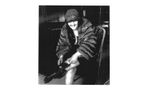User:Simon/Bootlegging: Difference between revisions
No edit summary |
|||
| Line 4: | Line 4: | ||
see also [[User:Simon/Diversifying through use|diversifying through use]], [[User:Simon/Multiplying form|multiplying form]], [[User:Simon/Republishing|republishing]] | see also [[User:Simon/Diversifying through use|diversifying through use]], [[User:Simon/Multiplying form|multiplying form]], [[User:Simon/Republishing|republishing]] | ||
Most people think of bootlegs as cheap knock-off products that masquerade as the real deal; bootleg cigarettes, designer-label clothes, not-quite-right imitations of Disney products and the like. Bootlegging began during the prohibition era with the practice of illegally distilling and distributing alcoholic beverages, often literally concealed in the leg of a boot while being transported. Run an image search on the keyword “bootleg” and you’ll probably see all sorts of suspicious-looking | Most people think of bootlegs as cheap knock-off products that masquerade as the real deal; bootleg cigarettes, designer-label clothes, not-quite-right imitations of Disney products and the like. Bootlegging began during the prohibition era with the practice of illegally distilling and distributing alcoholic beverages, often literally concealed in the leg of a boot while being transported. Run an image search on the keyword “bootleg” and you’ll probably see all sorts of suspicious-looking products. But the way I want to speak of bootlegging is as a social act, a homage, and one that creates and celebrates a multiplicity of form. I’m referring in particular to the vibrant culture of music sharing in the 1970s that followed portable cassette tape recorders entering the market. These allowed fans to cheaply record live performances and share these recordings—also known as bootlegs. | ||
Image: A “bootlegger” concealing a flask of an illegally distributed alcoholic beverage in the leg of a boot during the Prohibition era | Image: A “bootlegger” concealing a flask of an illegally distributed alcoholic beverage in the leg of a boot during the Prohibition era | ||
[[Category:Tasks of the Contingent Librarian|bootlegging]] | [[Category:Tasks of the Contingent Librarian|bootlegging]] | ||
Revision as of 20:40, 3 June 2020
bootlegging
see also diversifying through use, multiplying form, republishing
Most people think of bootlegs as cheap knock-off products that masquerade as the real deal; bootleg cigarettes, designer-label clothes, not-quite-right imitations of Disney products and the like. Bootlegging began during the prohibition era with the practice of illegally distilling and distributing alcoholic beverages, often literally concealed in the leg of a boot while being transported. Run an image search on the keyword “bootleg” and you’ll probably see all sorts of suspicious-looking products. But the way I want to speak of bootlegging is as a social act, a homage, and one that creates and celebrates a multiplicity of form. I’m referring in particular to the vibrant culture of music sharing in the 1970s that followed portable cassette tape recorders entering the market. These allowed fans to cheaply record live performances and share these recordings—also known as bootlegs.
Image: A “bootlegger” concealing a flask of an illegally distributed alcoholic beverage in the leg of a boot during the Prohibition era

